A cottage garden represents the perfect blend of natural beauty and informal charm, where flowers, herbs, and vegetables grow together in harmonious abundance. These enchanting spaces originated from practical English laborers' gardens but have evolved into romantic havens that celebrate nature's wild beauty. Whether you have a sprawling country property or a compact urban space, cottage garden design offers endless possibilities for creating a magical outdoor retreat. The key lies in embracing controlled chaos, mixing colors and textures freely, and allowing plants to spill naturally over paths and borders. Each cottage garden tells a unique story through carefully chosen plants that bloom throughout seasons.
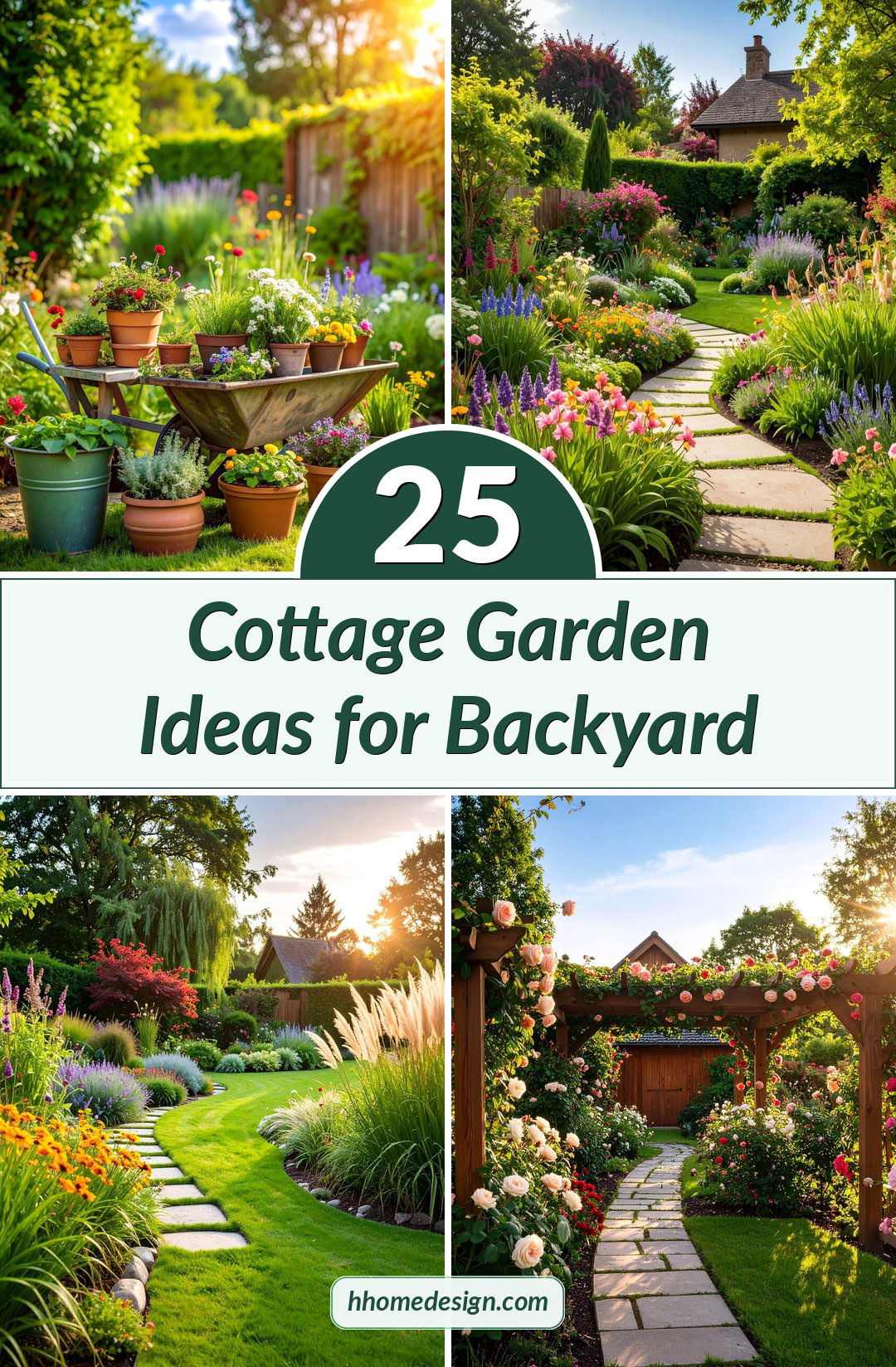
1. Classic English Cottage Garden with Mixed Borders

Transform your outdoor space with dense, overflowing borders filled with traditional English cottage plants like foxgloves, delphiniums, and hollyhocks. This timeless design features tall spires of blue delphiniums creating dramatic backdrops for roses, while sweet peas climb rustic wooden stakes. The front border showcases colorful dianthus, lavender, and catmint spilling over gravel pathways. Include heritage varieties of vegetables like rainbow chard and purple cabbage interplanted between flowers. A weathered picket fence provides structure while allowing plants to peek through gaps. This design captures authentic cottage charm through seemingly random plantings that actually follow careful height gradations from tallest at back to shortest at front, creating natural layers of color and texture throughout growing seasons.
2. Fragrant Cottage Garden with Scented Pathways
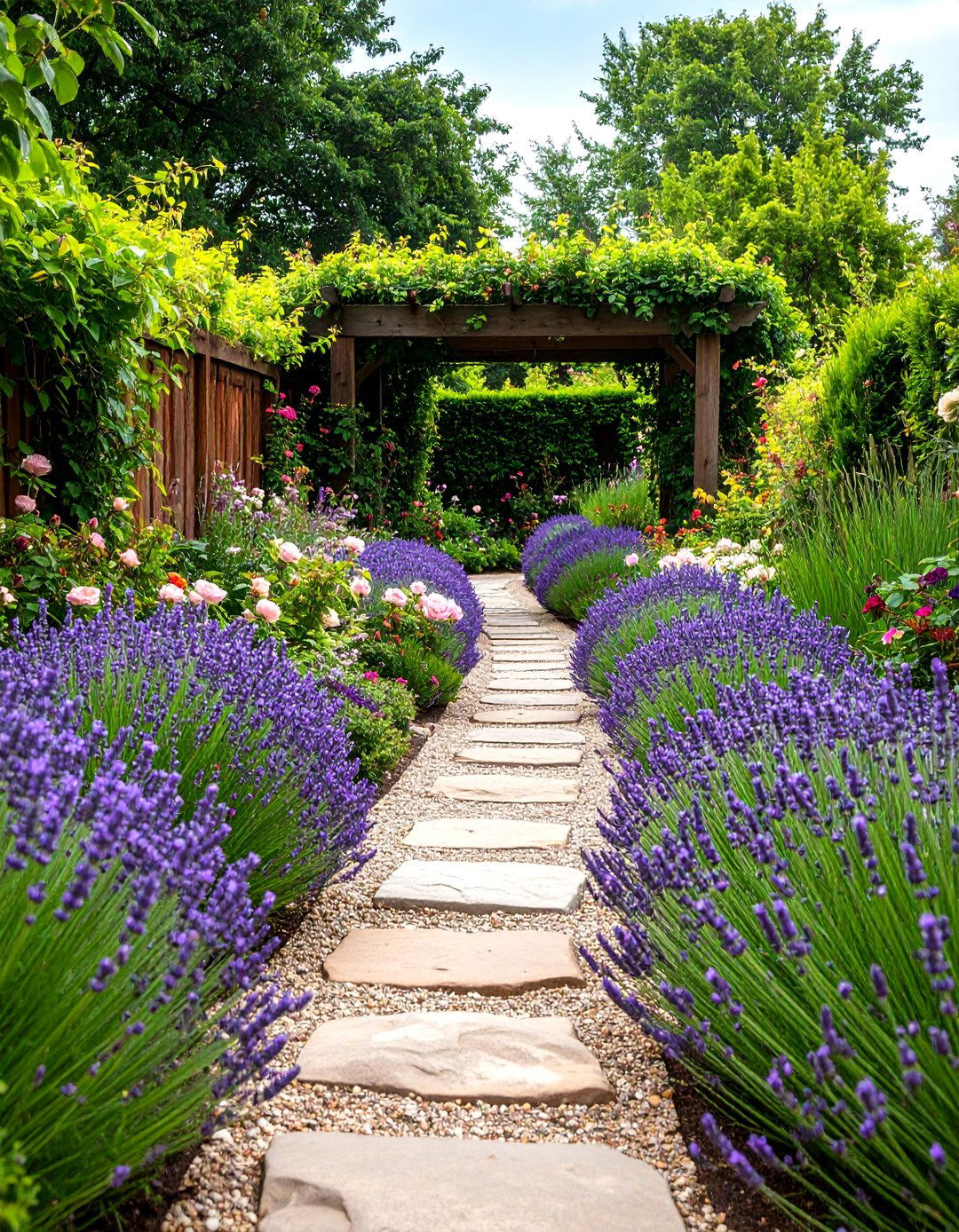
Create an aromatic paradise by designing pathways lined with intensely fragrant plants that release their perfumes when brushed against. Plant creeping thyme between stepping stones, allowing its lemony scent to emerge underfoot. Border pathways with lavender hedges, honeysuckle-covered arbors, and climbing jasmine on rustic trellises. Include night-scented stocks and four o'clocks for evening fragrance, while scented geraniums in vintage containers provide daytime aromatics. Rosa rugosa and damask roses offer traditional rose perfumes, complemented by sweet peas trained on wigwam supports. Herbs like rosemary, sage, and mint create functional fragrance gardens near seating areas. This sensory-rich design transforms garden strolls into perfumed journeys, with each season bringing different aromatic combinations that engage visitors through multiple senses rather than visual appeal alone.
3. Cottage Garden with Winding Gravel Paths
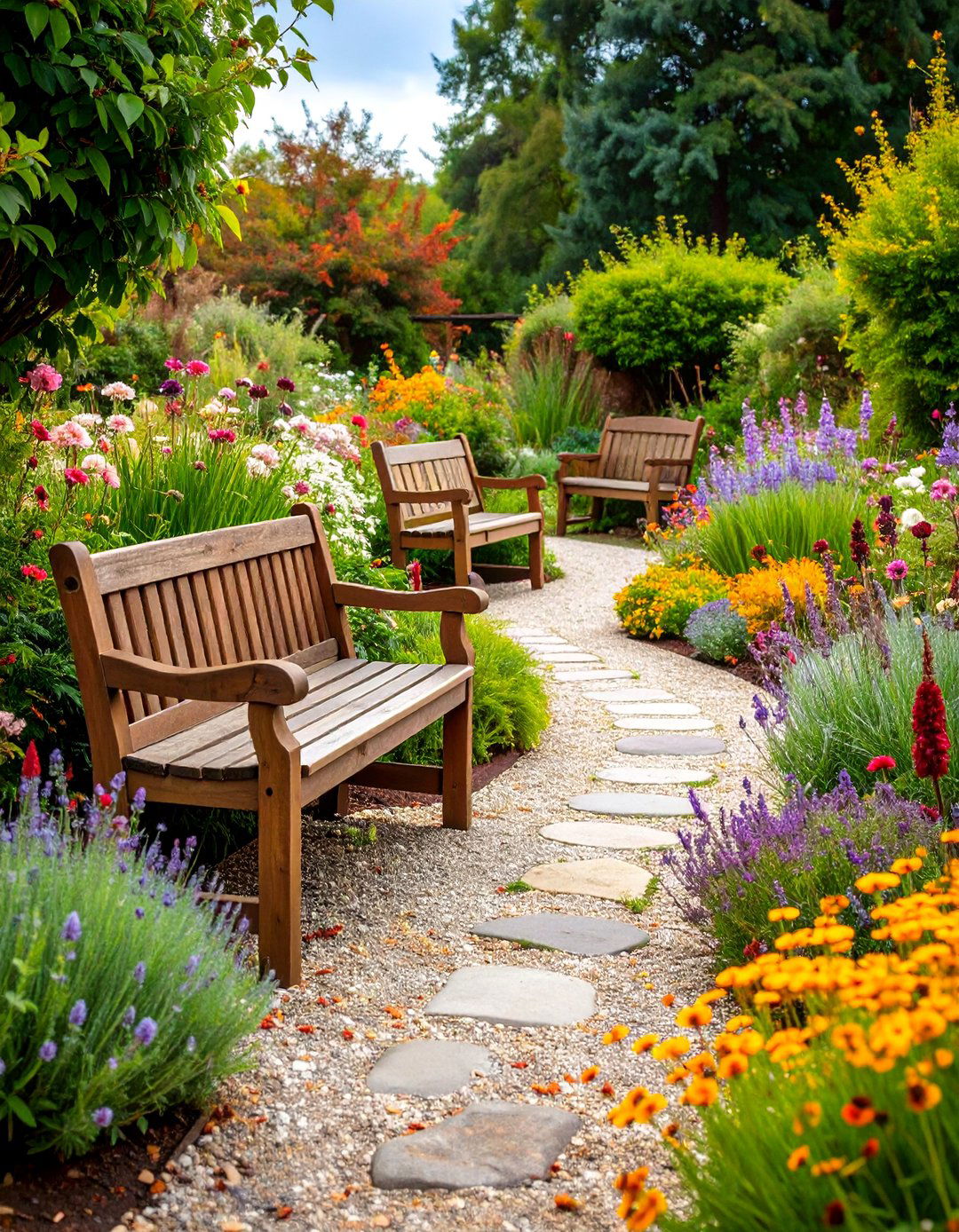
Design curved, meandering pathways using warm-toned gravel that creates natural flow through densely planted borders. These paths should wind organically between flower beds, disappearing around corners to create mystery and encourage exploration. Edge pathways with low-growing plants like lamb's ear, lady's mantle, and hardy geraniums that soften hard lines. Install rustic wooden benches at strategic curves where visitors can rest and admire different garden vistas. Include stepping stone crossings through wider planted areas, allowing close interaction with fragrant herbs and flowers. Plant self-seeding annuals like poppies and nigella along path edges to create naturalized drifts. The gravel provides excellent drainage while creating pleasant crunching sounds underfoot, enhancing the sensory garden experience while requiring minimal maintenance compared to grass pathways that struggle in shade.
4. Rose Cottage Garden with Climbing Structures

Build your garden around magnificent roses using arbors, pergolas, and trellises to showcase climbing and rambling varieties. Train David Austin roses over arched gateways, while rambling roses like 'Albertine' cascade over tall structures. Underplant roses with complementary perennials including nepeta, hardy geraniums, and alchemilla that enhance rose blooms while providing ground coverage. Create vertical interest with obelisks supporting clematis intertwined with climbing roses for extended flowering periods. Include shrub roses throughout borders, choosing disease-resistant varieties in soft pastels and deep crimsons. Add heritage rose varieties for historical authenticity and intense fragrance. This design celebrates roses as cottage garden queens while ensuring year-round structure through carefully positioned hardscape elements. The layered approach provides rose blooms from ground level to overhead canopies, creating immersive floral experiences throughout growing seasons.
5. Wildlife-Friendly Cottage Garden with Native Plants
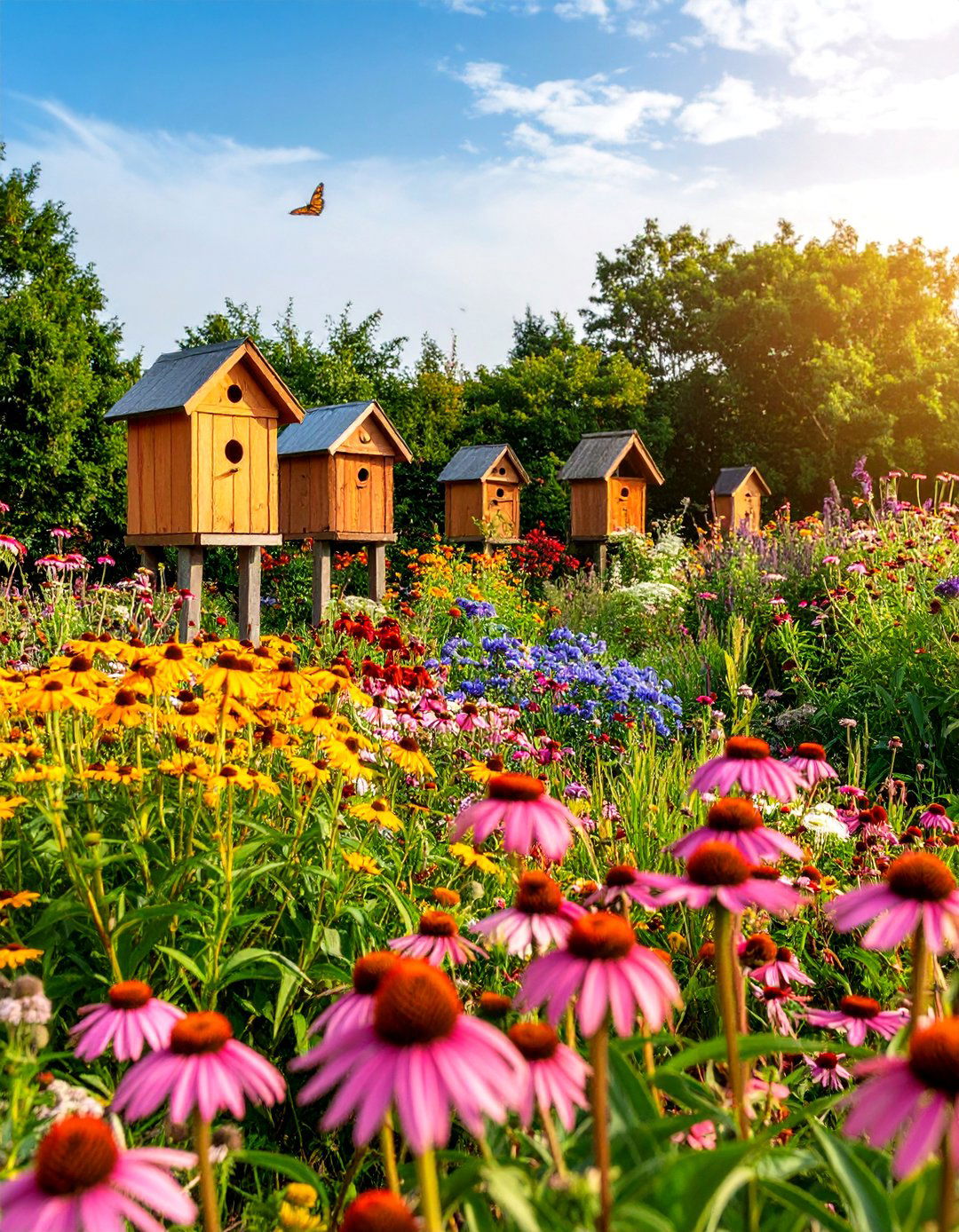
Design a cottage garden that attracts butterflies, bees, and birds by selecting native plants and wildlife-supporting flowers. Include native wildflowers like purple coneflowers, black-eyed Susans, and wild bergamot alongside traditional cottage plants. Create habitat diversity with berry-producing shrubs, seed-bearing perennials left standing through winter, and shallow water features for wildlife drinking. Plant pollinator favorites including bee balm, salvia, and native asters that provide nectar throughout seasons. Include native grasses for bird nesting materials and winter interest. Install rustic bird houses and bat boxes integrated naturally into plant structures. Avoid pesticides completely, embracing natural garden ecosystem balance. This environmentally conscious approach creates beautiful displays while supporting local wildlife populations, demonstrating how cottage gardens can serve conservation purposes without sacrificing aesthetic appeal through thoughtful plant selection and garden management practices.
6. Cottage Garden with Water Features and Moisture-Loving Plants
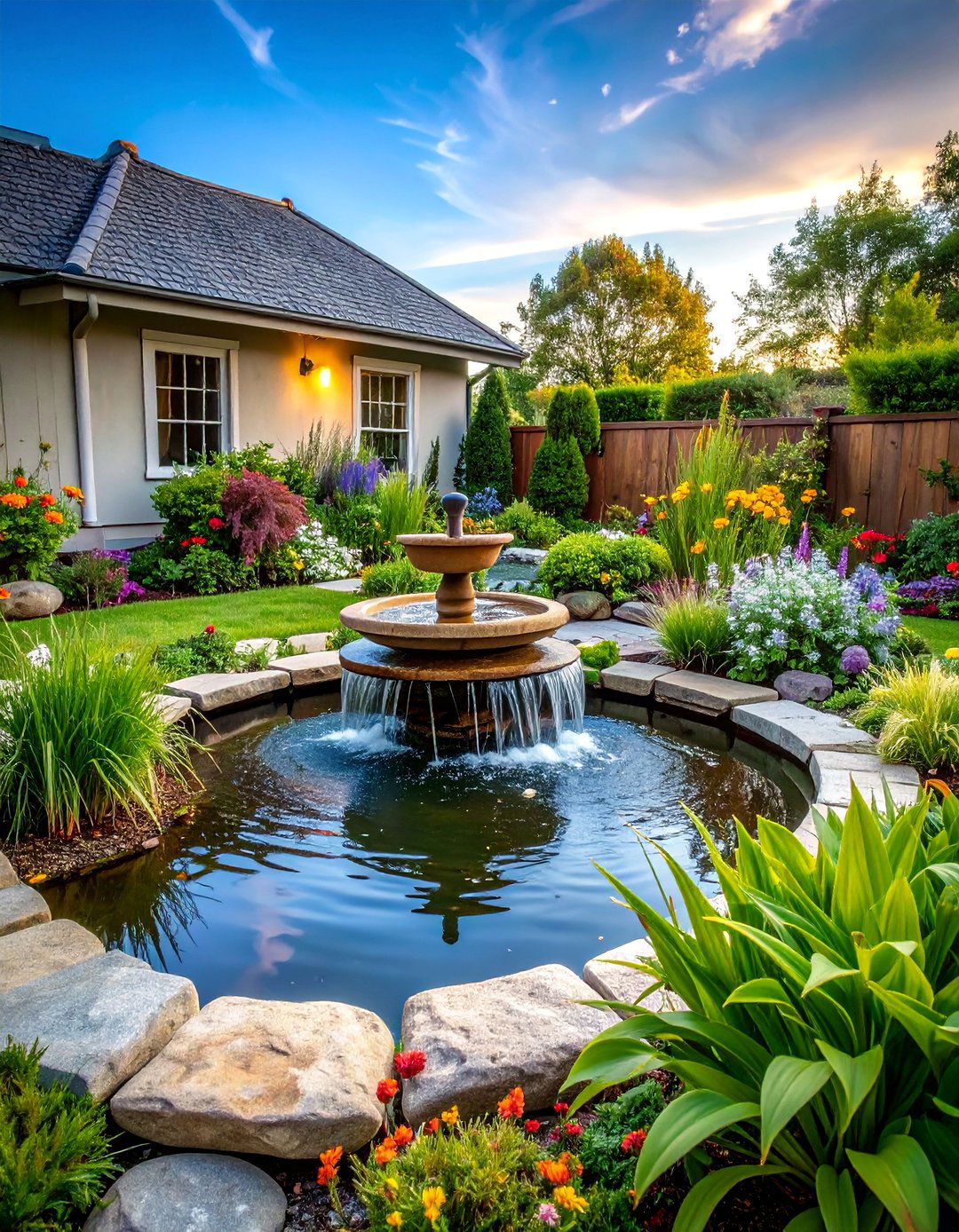
Incorporate natural water elements using stone fountains, shallow ponds, or meandering streams surrounded by moisture-loving cottage plants. Plant astilbe, hostas, and ferns in shaded, damp areas around water features, while water iris and sweet flag thrive in shallow water margins. Include primulas, ligularia, and Japanese painted ferns for colorful foliage contrasts. Create bog gardens using containers or naturally damp areas planted with pitcher plants and native sedges. Position rustic stone benches near water features for contemplative seating surrounded by lush plantings. The sound of trickling water enhances the peaceful cottage atmosphere while supporting different plant communities than typical cottage gardens. This design works especially well in naturally moist locations or areas with poor drainage, turning challenging conditions into beautiful focal points that attract wildlife and provide cooling effects during hot weather.
7. Cottage Herb Garden with Culinary and Medicinal Plants
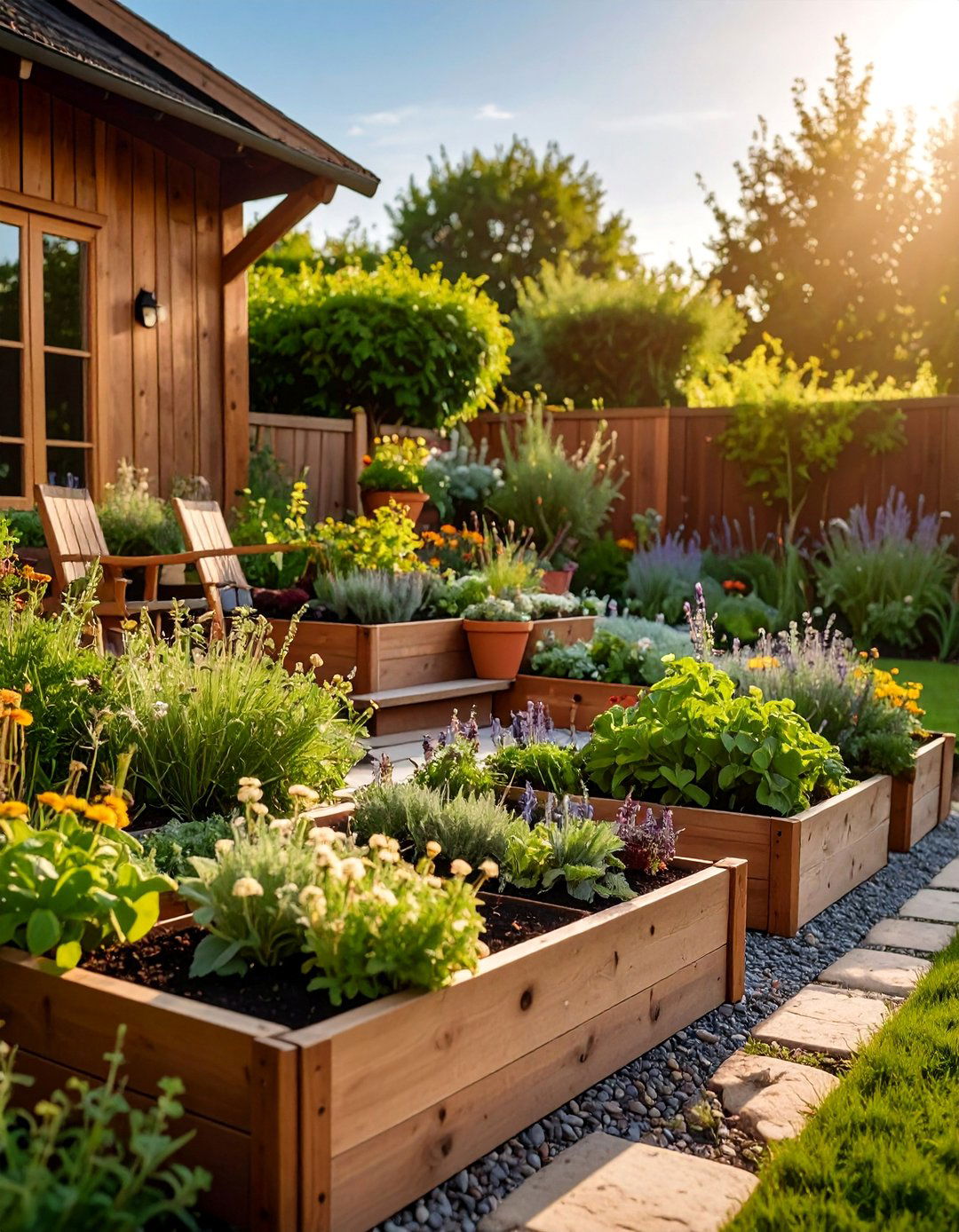
Design a practical cottage garden focused on useful herbs for cooking, crafts, and traditional remedies. Create dedicated sections for culinary herbs like thyme, rosemary, sage, and oregano arranged in informal drifts rather than rigid rows. Include traditional medicinal herbs such as echinacea, chamomile, and calendula that also provide beautiful flowers. Plant aromatic herbs like lavender and mint near seating areas for sensory enjoyment. Include heritage vegetable varieties like purple carrots and glass gem corn interplanted with herbs for visual interest. Use rustic raised beds or container gardens filled with herb combinations that complement each other both visually and culinarily. This functional approach to cottage gardening provides fresh ingredients while maintaining traditional aesthetic appeal through careful plant selection that serves multiple purposes beyond mere decoration.
8. Cottage Garden with Seasonal Color Succession

Plan a cottage garden that provides continuous color from early spring through late fall by carefully timing plant selections. Begin with spring bulbs like daffodils and tulips interplanted with early perennials, followed by late spring peonies and iris. Summer features peak cottage garden displays with roses, delphiniums, and annuals, while late summer brings asters, sedums, and ornamental grasses. Include plants with attractive seed heads and berries for winter interest. Use succession planting techniques with annuals to maintain continuous bloom throughout growing seasons. Plant spring flowering shrubs like lilac and mock orange, summer-blooming hydrangeas, and fall-berrying elderberries for shrub layer succession. This temporal approach ensures the garden never lacks visual interest, providing reasons to visit and enjoy different seasonal displays while maintaining the relaxed cottage garden aesthetic through changing but consistent plantings.
9. Cottage Garden Entrance with Arbor Gateway
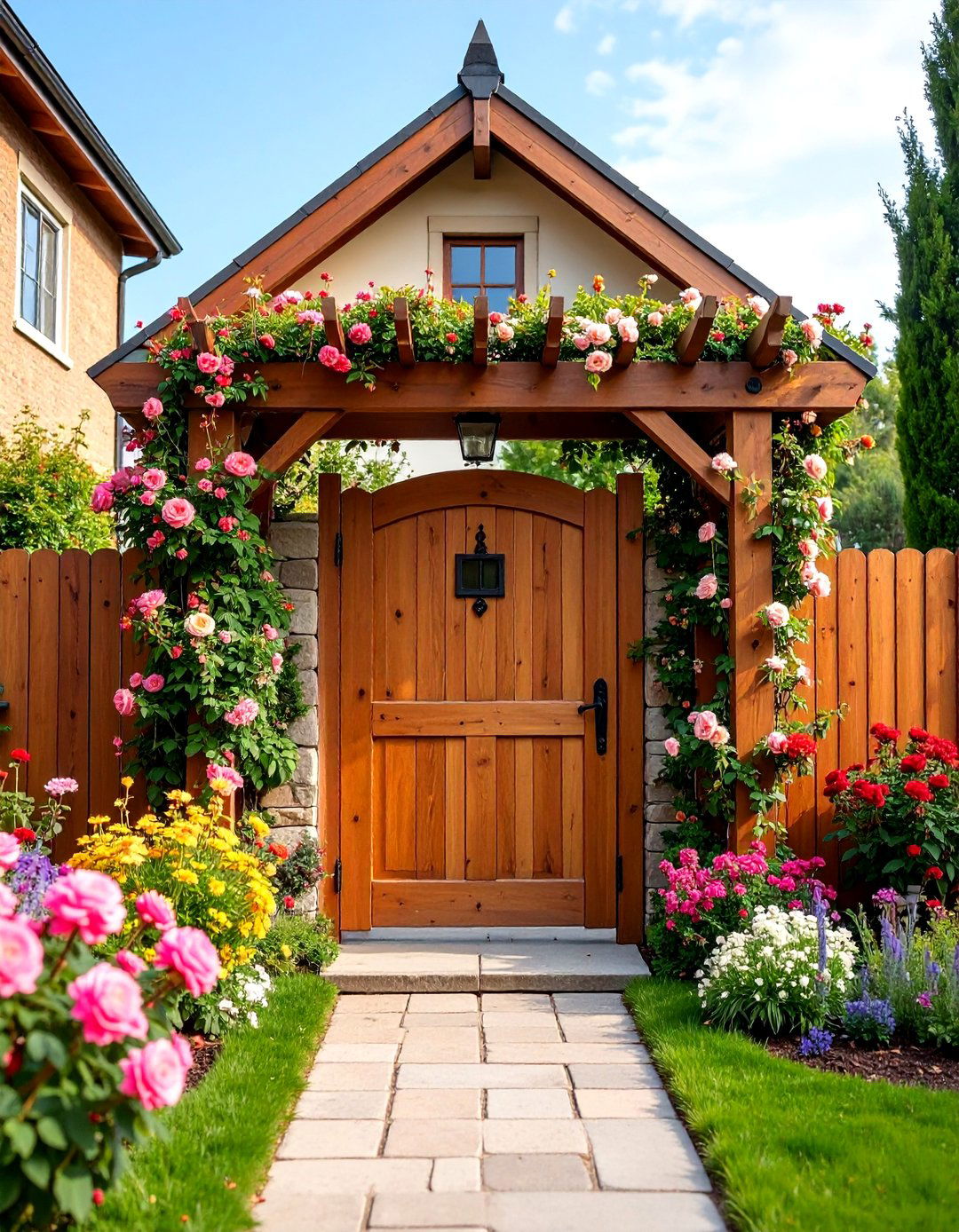
Create a welcoming entrance feature using wooden or metal arbors draped with climbing roses, clematis, or honeysuckle. The arbor serves as a transition between different garden areas while providing vertical growing space for vines. Flank the entrance with billowing perennials like peonies, delphiniums, and ornamental grasses that create soft, informal borders. Include fragrant plants near the entrance to welcome visitors with pleasant scents. Install a rustic gate within the arbor structure for additional charm and partial enclosure. Plant self-seeding annuals like poppies and nigella around the entrance area to create naturalized drifts. The entrance design should hint at garden treasures beyond while providing immediate visual impact. This focal point approach creates anticipation and frames garden views, making even small cottage gardens feel more expansive and mysterious through strategic placement of structural elements and plantings.
10. Shade Cottage Garden with Woodland Plants

Transform shaded areas into enchanting cottage garden spaces using woodland plants and shade-tolerant flowers. Plant hostas, heucheras, and ferns as foundation plants, complemented by flowering shade perennials like astilbe, bleeding hearts, and coral bells. Include spring ephemeral wildflowers such as trilliums and bloodroot for early season interest before tree canopy fully develops. Use white and light-colored flowers to brighten dark areas, including white foxgloves, white astilbe, and variegated foliage plants. Create meandering pathways using bark mulch or flagstone that complement the woodland aesthetic. Add rustic benches for contemplative seating among the cool, peaceful plantings. This approach proves that cottage gardens can thrive in challenging shade conditions while maintaining their characteristic informal charm through appropriate plant selection and design modifications that work with existing conditions rather than fighting them.
11. Cottage Garden with Vintage Container Displays
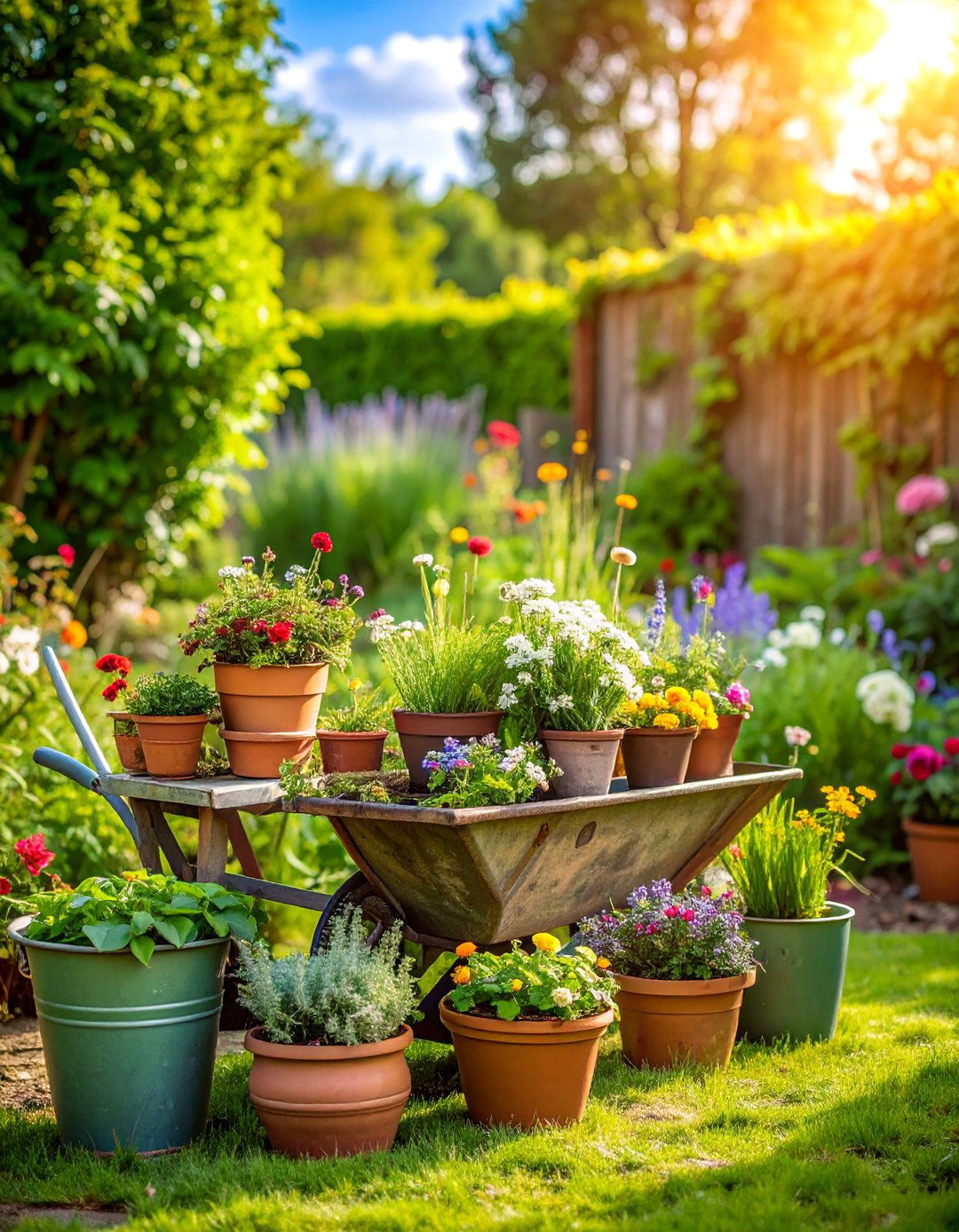
Incorporate weathered containers, old wheelbarrows, and vintage planters throughout the garden to create mobile planting opportunities and rustic charm. Use galvanized watering cans, wooden crates, and ceramic crocks filled with cascading annuals and trailing herbs. Position containers strategically along pathways and near seating areas for maximum visual impact. Plant containers with changing seasonal displays while maintaining permanent cottage garden borders. Include herbs in small containers for easy harvest access near kitchen areas. Use container groupings to create temporary focal points that can be rearranged as seasons change. The vintage container approach adds flexibility to cottage garden design while providing opportunities to include plants that might not thrive in local soil conditions. This style works particularly well for renters or those wanting to experiment with different plant combinations before committing to permanent installations.
12. Cottage Garden with Cutting Flower Borders
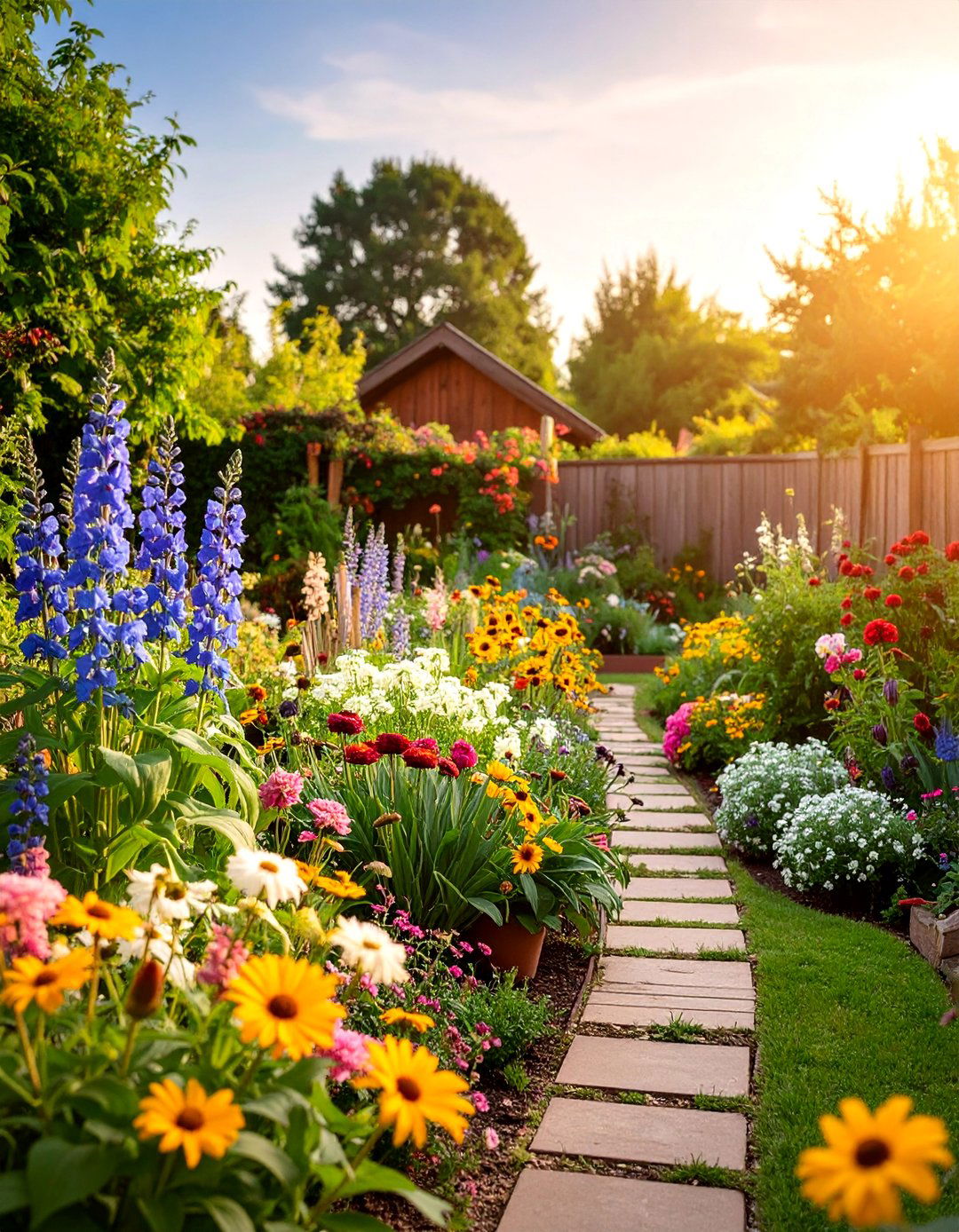
Design dedicated cutting garden areas that provide abundant flowers for indoor arrangements while maintaining cottage garden aesthetics. Include long-stemmed flowers like delphiniums, foxgloves, and gladioli for dramatic arrangements, complemented by filler flowers such as gypsophila and nigella. Plant productive annuals like zinnias, cosmos, and sunflowers in informal drifts rather than rigid rows. Include foliage plants like lady's mantle and silver artemisia for arrangement greenery. Create easy access paths between planting areas for convenient harvesting without disturbing other plants. Succession plant annuals to ensure continuous bloom throughout the cutting season. This practical approach to cottage gardening provides beautiful indoor flowers while maintaining the relaxed, abundant outdoor aesthetic. The cutting garden design proves that functional and beautiful garden spaces can coexist successfully when properly planned and managed with both purposes in mind.
13. Cottage Garden with Evening Primrose and Night Bloomers

Create magical evening garden experiences using night-blooming flowers and plants with evening fragrance. Plant four o'clocks, evening primrose, and moonflowers that open as daylight fades, complemented by night-scented stocks and nicotiana for intense evening perfume. Include silver and white foliage plants like artemisia and lamb's ear that glow in moonlight and reflect available light sources. Position white flowers strategically to create luminous effects during evening hours when darker colors disappear. Add solar lighting or lanterns along pathways for safe evening garden navigation. Include evening-active plants that attract night pollinators like moths and evening-feeding hummingbirds. This specialized cottage garden design extends garden enjoyment into evening hours, creating romantic, mysterious atmospheres perfect for dinner parties or quiet contemplation after busy days. The night garden demonstrates how cottage gardens can serve different purposes throughout daily cycles.
14. Cottage Garden with Edible Landscaping Integration
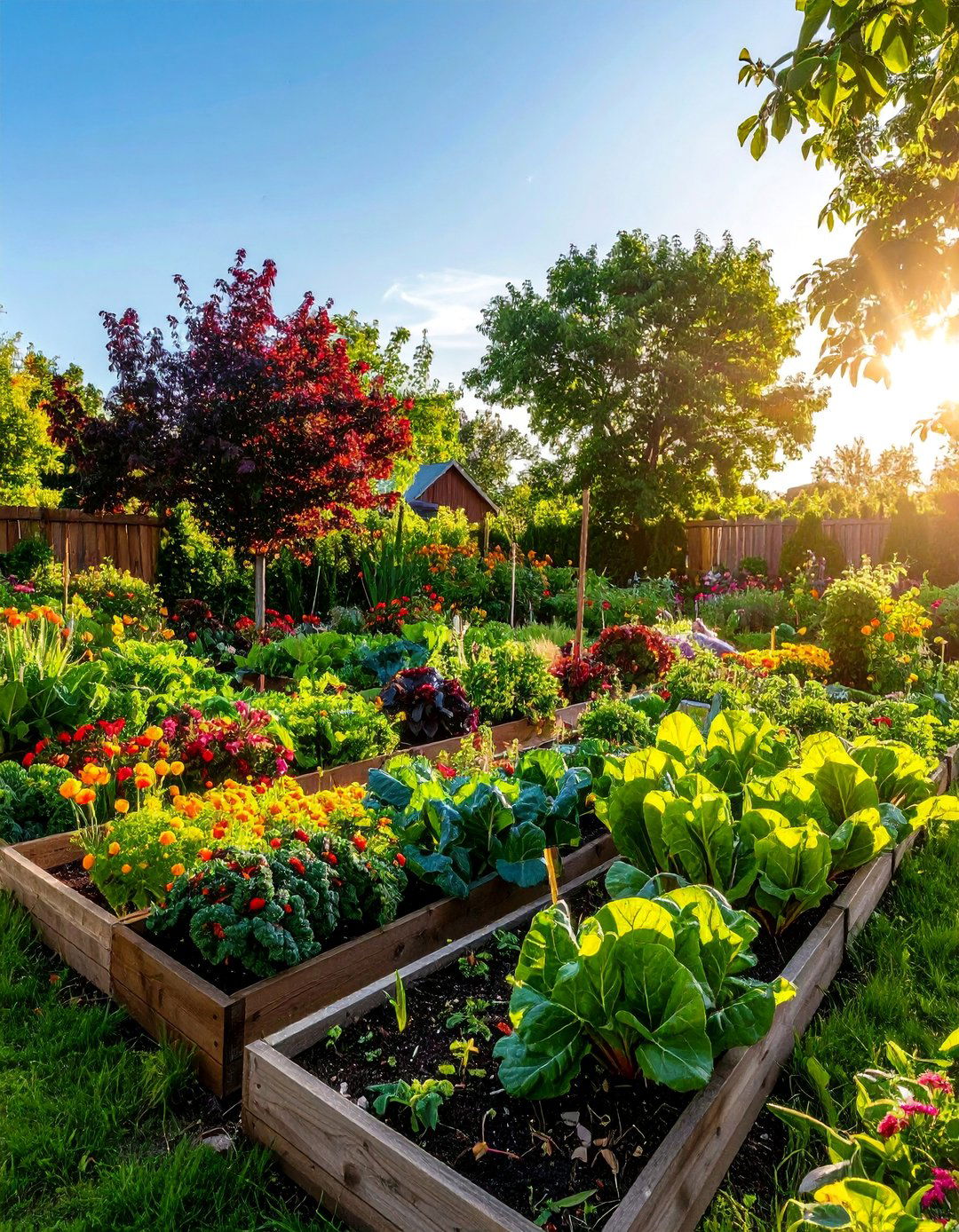
Blend ornamental and edible plants seamlessly throughout cottage garden borders, creating beautiful displays that also provide food. Interplant rainbow chard, purple kale, and ornamental cabbage among flowers for colorful foliage contrasts. Include productive fruit trees like apples and pears trained along walls or used as garden anchors. Plant herbs throughout flower borders where their textures and colors complement ornamental plants while providing kitchen ingredients. Use trailing tomatoes and cucumbers on rustic supports integrated into flower displays. Include edible flowers like nasturtiums, calendulas, and violas that serve both decorative and culinary purposes. This approach demonstrates that productive gardens need not sacrifice beauty for function, creating spaces that feed both body and soul through thoughtful integration of useful and ornamental plants that work together to create cohesive, abundant garden displays.
15. Cottage Garden with Ornamental Grass Accents
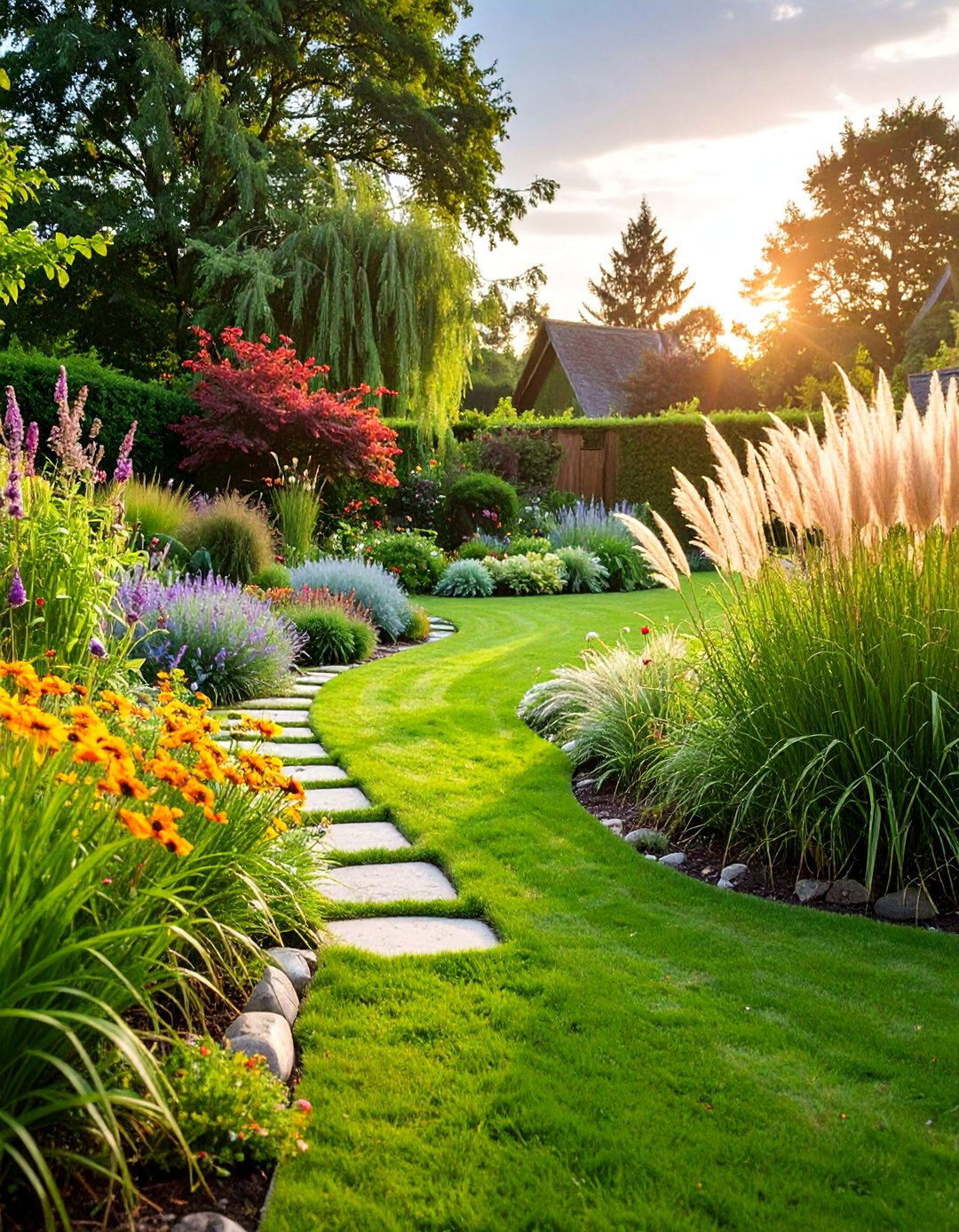
Incorporate ornamental grasses throughout cottage garden borders to provide texture, movement, and seasonal interest beyond traditional flower displays. Use fountain grass, feather reed grass, and miscanthus as structural anchors between flowering perennials. Include shorter grasses like blue fescue and sedges for front border interest and pathway edging. The grasses provide winter interest when perennial flowers have died back, creating structure and movement through cold months. Plant grasses to catch and filter light, creating beautiful backlighting effects during golden hour. Include native grasses that support wildlife while requiring minimal maintenance once established. The grass integration adds contemporary elements to traditional cottage garden design while maintaining informal, natural aesthetics. This approach works particularly well in windy locations where grasses' movement adds dynamic visual interest throughout growing seasons, proving that modern plant selections can enhance rather than compromise traditional cottage garden principles.
16. Cottage Garden with Heirloom Vegetable Integration

Celebrate garden heritage by incorporating heirloom vegetables throughout flower borders, creating productive displays that honor traditional cottage garden roots. Plant purple-top turnips, scarlet runner beans, and glass gem corn as ornamental elements that also provide food. Include heritage tomato varieties in decorative cages integrated into flower displays. Use colorful lettuce varieties and ornamental peppers as border edging plants. Train climbing heirloom squash over rustic arbors alongside morning glories and clematis. Include traditional herbs like borage and comfrey that serve multiple garden purposes. This approach connects modern gardeners with historical cottage garden traditions while providing diverse harvests throughout growing seasons. The heirloom integration demonstrates how cottage gardens evolved from necessity, creating beautiful spaces that serve practical purposes while maintaining their characteristic informal charm through diverse plant combinations that tell stories of garden heritage and cultural continuity.
17. Cottage Garden with Climbing Plant Tapestries
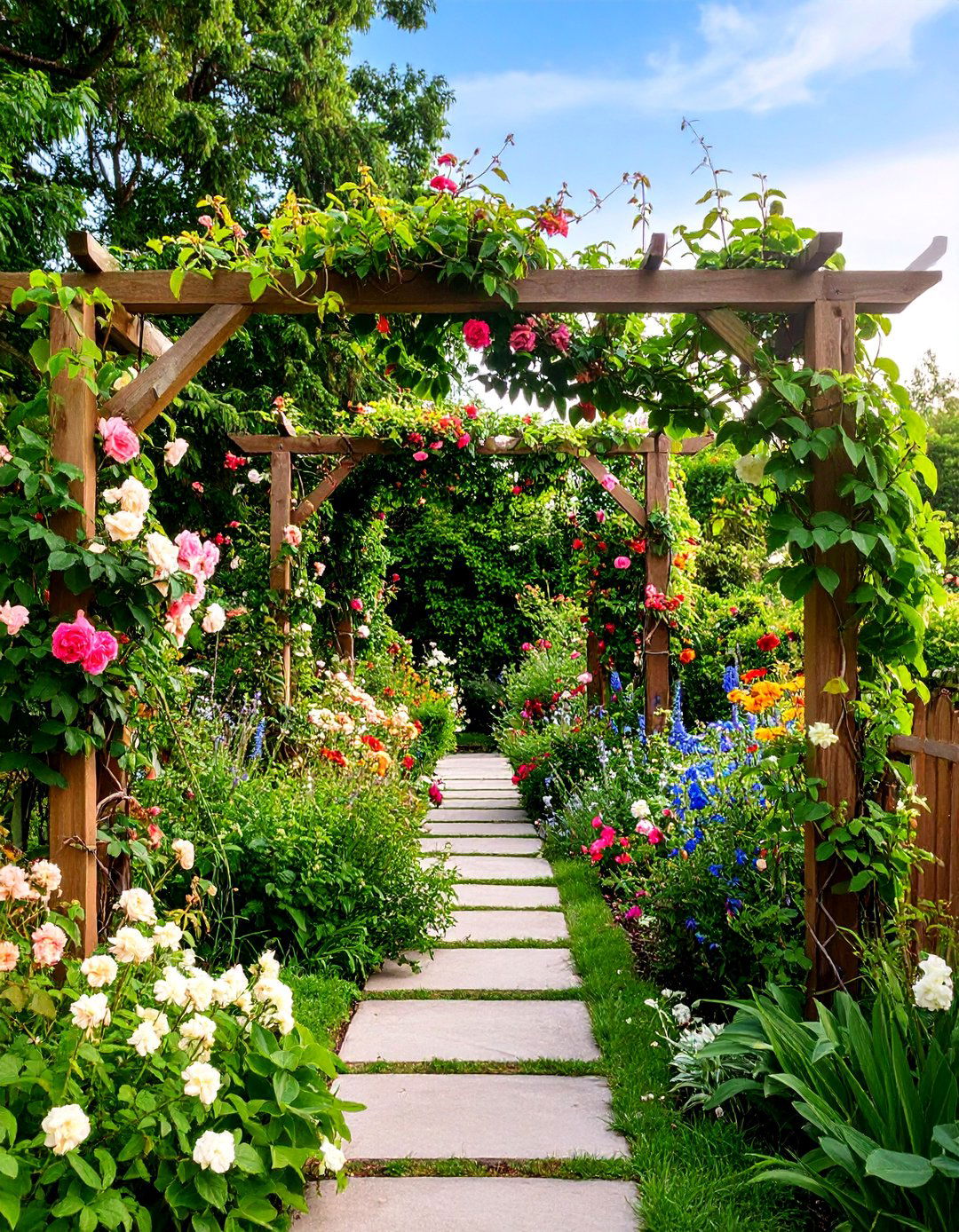
Create vertical interest using diverse climbing plants woven together on walls, fences, and freestanding structures throughout the garden. Combine clematis with climbing roses for extended flowering periods, while adding annual vines like morning glories and sweet peas for additional color. Include productive climbing plants like grape vines and hardy kiwis that provide food alongside beauty. Use different support structures including rustic poles, wire grids, and natural branch frameworks. Plant climbers with varying bloom times to ensure continuous vertical displays throughout growing seasons. Include evergreen climbers like ivy for year-round coverage of less attractive surfaces. This vertical approach maximizes planting space in small areas while creating living walls that provide privacy, wind protection, and habitat for beneficial insects and birds. The climbing plant strategy demonstrates how cottage gardens can adapt to challenging sites while maintaining their abundant, layered aesthetic through creative use of vertical growing space.
18. Cottage Garden with Stone Features and Alpine Plants
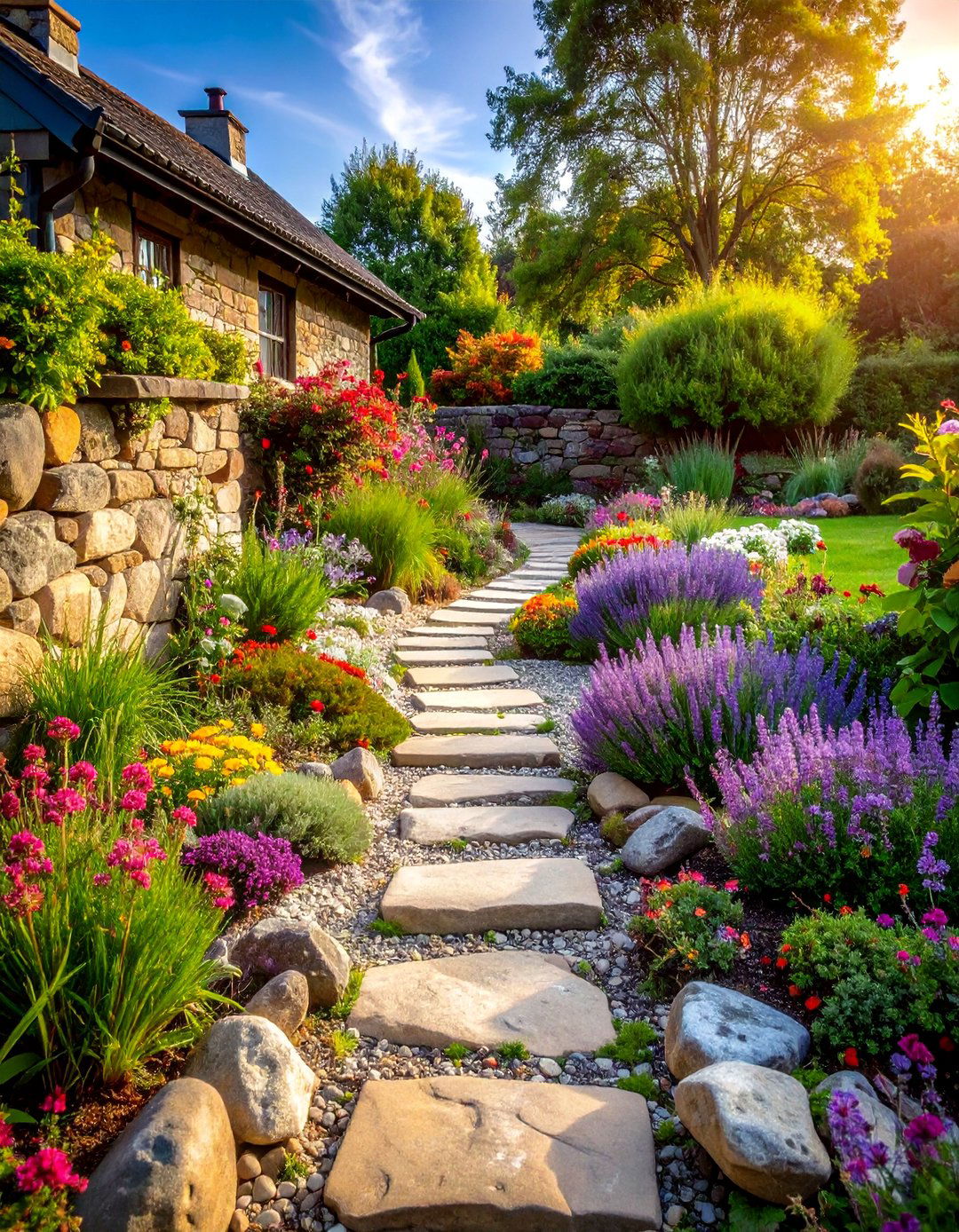
Integrate natural stone elements including retaining walls, rock gardens, and stone pathways with alpine and rock garden plants that complement traditional cottage plantings. Use local stone materials for authentic regional character while creating well-drained areas for Mediterranean herbs and rock garden perennials. Include creeping thymes, sedums, and small bulbs that naturalize in stone crevices. Build dry stone walls that provide habitat for beneficial insects while creating terraced planting areas. The stone features provide permanent structure while allowing plants to soften hard edges through natural growth patterns. Include water features using stone construction for authentic cottage garden character. This approach works particularly well on sloped sites where stone terracing creates level planting areas while managing drainage issues. The stone integration demonstrates how cottage gardens can incorporate challenging topography while maintaining their characteristic abundance through appropriate plant selection and thoughtful hardscape design.
19. Cottage Garden with Butterfly and Pollinator Havens

Design specialized garden areas focused on supporting butterfly populations and beneficial pollinators through strategic plant selection and habitat creation. Include butterfly host plants like milkweed for monarchs alongside nectar plants such as bee balm, purple coneflower, and native asters. Create butterfly puddling areas using shallow stone basins filled with sand and water for mineral consumption. Plant native wildflowers in informal drifts that provide pollen and nectar throughout the growing season. Include plants with varying bloom times to support pollinators from early spring through late fall. Avoid pesticide use completely while managing garden pests through beneficial insect attraction and companion planting strategies. This ecological approach to cottage gardening creates beautiful displays while serving important environmental functions, demonstrating how traditional garden aesthetics can support conservation goals through mindful plant selection and garden management practices that benefit both garden beauty and local ecosystem health.
20. Cottage Garden with Four-Season Interest Design
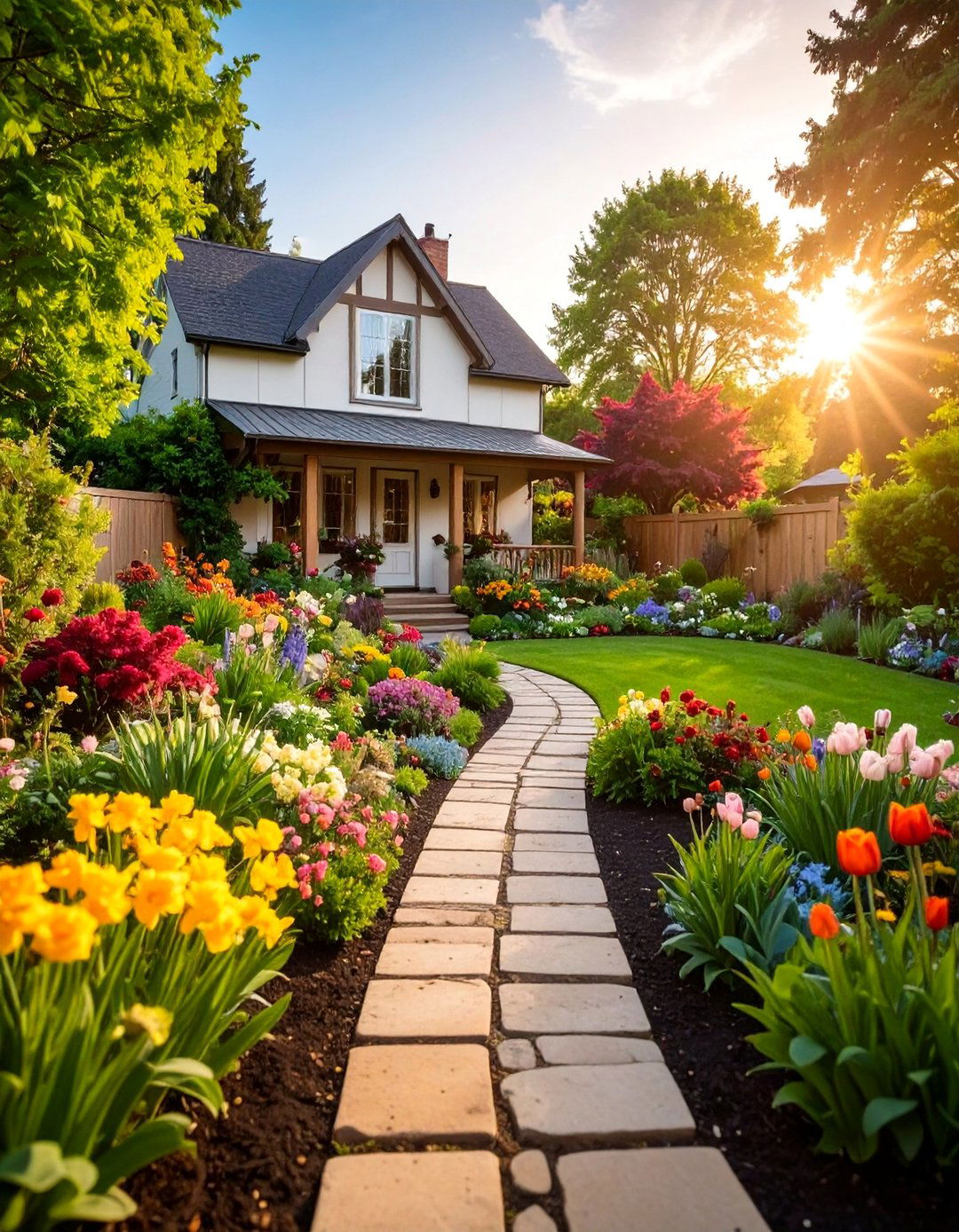
Plan garden displays that provide visual interest throughout all seasons using diverse plant selections and strategic design elements. Include spring flowering bulbs, summer perennial displays, fall color from ornamental grasses and berrying shrubs, plus winter interest from evergreen structures and attractive seed heads. Use plants with multiple seasonal attributes like serviceberries that offer spring flowers, summer fruit, and fall color. Include evergreen shrubs for winter structure while planning deciduous plantings for summer shade and fall color displays. Create focal points that change seasonally through succession planting and container gardens. This comprehensive approach ensures the cottage garden remains attractive and interesting throughout the year rather than only during peak growing seasons, providing reasons to visit and enjoy the space during every season while maintaining the characteristic cottage garden abundance through different seasonal plant contributions and carefully planned design elements.
21. Cottage Garden with Heritage Rose Collection

Create a specialized cottage garden celebrating antique and heritage rose varieties alongside complementary period-appropriate plantings. Include gallica, damask, and alba roses for historical authenticity, complemented by David Austin English roses that combine old-fashioned appearance with modern disease resistance. Underplant roses with traditional companions like lavender, catmint, and hardy geraniums that enhance rose displays while providing ground coverage. Include climbing heritage varieties trained over rustic arbors and along cottage-style fencing. Plant herbs and cottage perennials that were historically grown alongside roses in working cottage gardens. This specialized approach celebrates rose heritage while creating authentic cottage garden atmospheres through careful attention to historical plant combinations and garden design principles. The heritage focus provides opportunities to learn about garden history while creating beautiful displays that honor traditional cottage garden roots and rose breeding heritage.
22. Cottage Garden with Mediterranean Herb Spiral
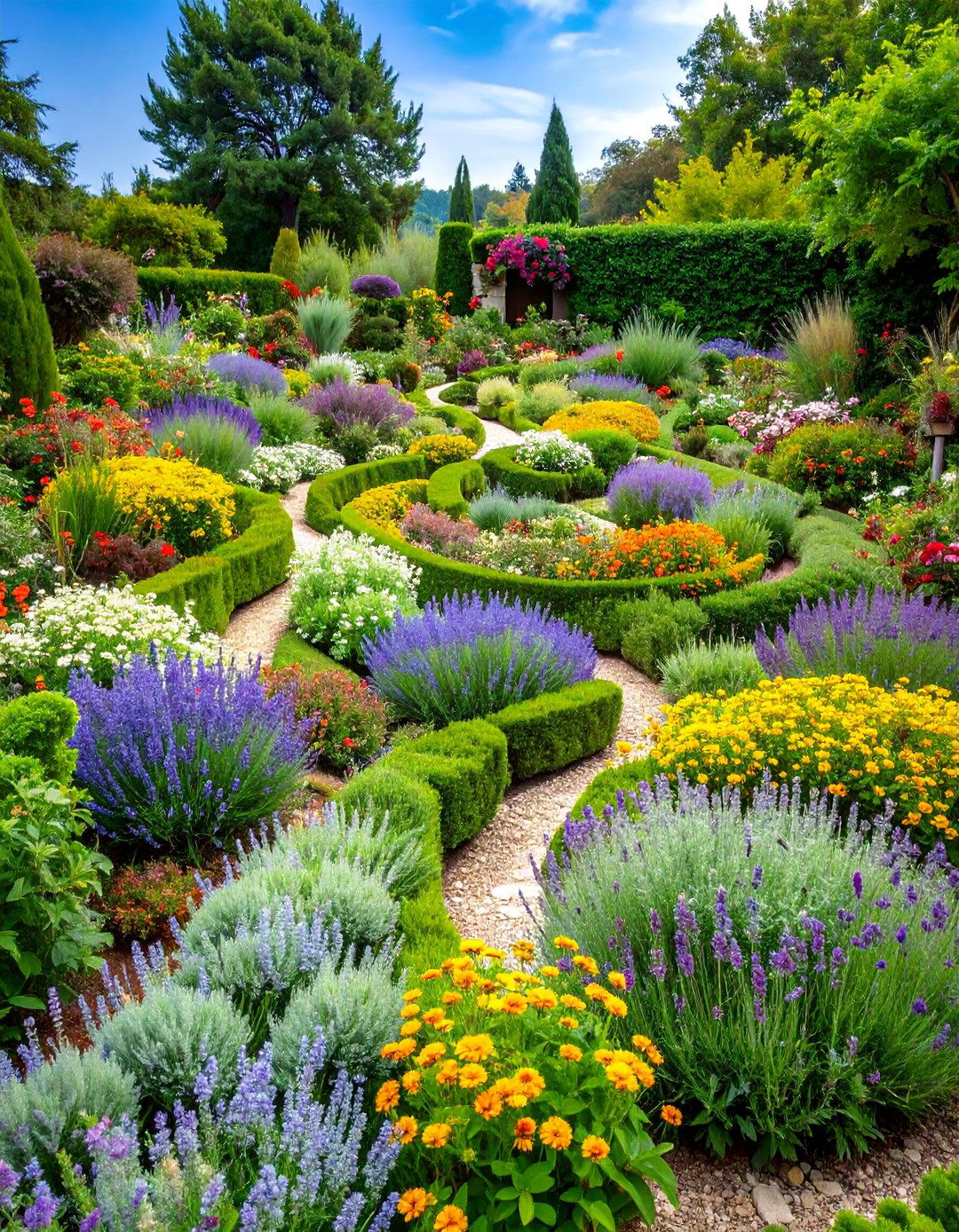
Build a spiral herb garden using stone or reclaimed materials that creates diverse microclimates for different herb varieties while maintaining cottage garden informality. Plant Mediterranean herbs like rosemary, thyme, and oregano at the sunny, well-drained top, while moisture-loving herbs like parsley and chives grow at the shadier, moister bottom. Include culinary herbs throughout the spiral structure, creating easy harvest access from all sides. Integrate edible flowers like nasturtiums and calendulas between herb plantings for additional color and culinary interest. The spiral design provides maximum growing space in minimal area while creating attractive focal points that serve practical purposes. Include seating areas nearby for herb garden contemplation and harvest planning. This structured approach to herb growing maintains cottage garden character while providing organized access to fresh herbs for cooking and crafts, demonstrating how functional garden elements can enhance rather than compromise aesthetic appeal.
23. Cottage Garden with Naturalized Bulb Drifts

Create spectacular spring displays using naturalized bulb plantings that return and multiply annually, providing effortless cottage garden color. Plant daffodils, crocuses, and grape hyacinths in informal drifts that appear naturally scattered rather than formally arranged. Include minor bulbs like snowdrops and winter aconites for early season interest before major bulb displays begin. Allow bulb foliage to die back naturally while emerging perennials hide yellowing leaves. Plant bulbs in lawn areas where they can naturalize without interference, creating meadow-like spring displays. Include species tulips and alliums that naturalize more successfully than hybrid varieties. This low-maintenance approach to spring color creates spectacular displays that improve annually through natural multiplication, requiring minimal intervention while providing maximum impact during early growing seasons when cottage garden perennials are just emerging from winter dormancy.
24. Cottage Garden with Rustic Fence and Gate Features

Frame cottage garden spaces using weathered wooden fencing, rustic gates, and natural barriers that provide structure while maintaining informal character. Use reclaimed materials for authentic aged appearance, or allow new materials to weather naturally over time. Include picket fencing with irregular spacing that allows plants to peek through while providing partial enclosure. Install rustic gates with traditional hardware that complement cottage garden aesthetics while providing access control. Train climbing plants over fence structures, softening hard lines while adding vertical growing space for roses, clematis, and annual vines. The fencing approach creates defined garden rooms while maintaining visual connection between areas, allowing glimpses of garden treasures beyond while providing structural framework for abundant plantings. This boundary creation demonstrates how cottage gardens can provide privacy and organization while maintaining their characteristic informal abundance through strategic use of rustic structural elements.
25. Cottage Garden with Rain Garden and Native Plantings
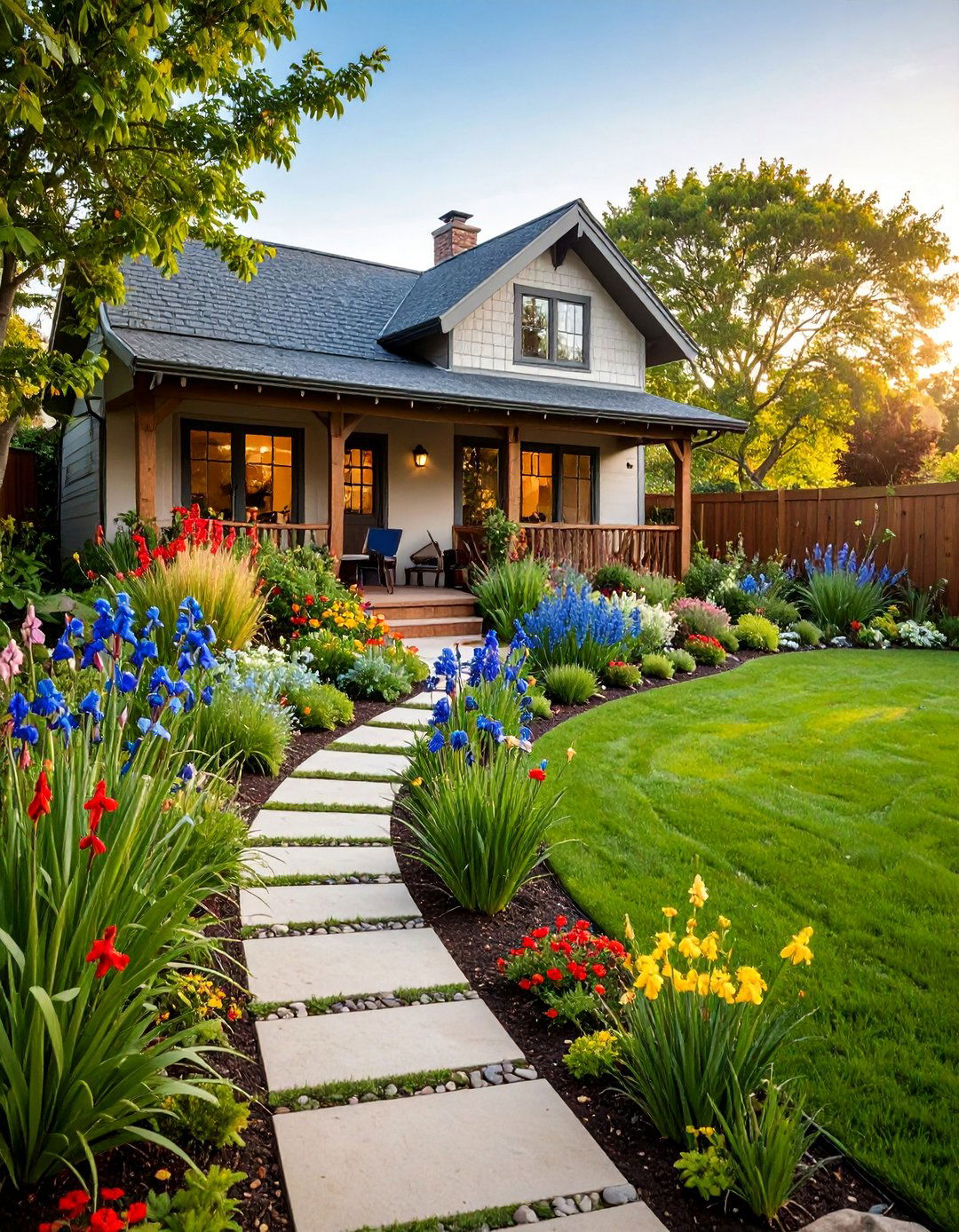
Transform problematic drainage areas into beautiful cottage garden features using rain garden techniques and native plant selections. Create shallow depressions that collect and filter rainwater runoff while supporting moisture-loving native plants like cardinal flower, blue flag iris, and native sedges. Include drought-tolerant natives on surrounding berms that handle both wet and dry conditions throughout seasons. Plant native wildflowers that provide cottage garden charm while supporting local ecosystems through appropriate plant selections. This sustainable approach to cottage gardening addresses environmental concerns while creating beautiful displays that require minimal maintenance once established. Include educational signage explaining rain garden functions for visiting friends and neighbors. The rain garden integration demonstrates how cottage gardens can evolve to meet contemporary environmental challenges while maintaining their characteristic beauty and abundance through thoughtful plant selection and innovative design approaches that serve multiple purposes.
Conclusion:
Cottage gardens offer endless possibilities for creating magical outdoor spaces that blend beauty with functionality. These 25 design ideas demonstrate how traditional cottage garden principles can adapt to modern needs while maintaining their timeless charm. Whether you choose fragrant pathways, wildlife havens, or heritage plant collections, success lies in embracing natural abundance and informal design. Remember that cottage gardens evolve over time, becoming more beautiful as plants mature and self-seed throughout the space. Start with one inspiring idea and gradually expand your cottage garden vision to create a personal outdoor retreat.


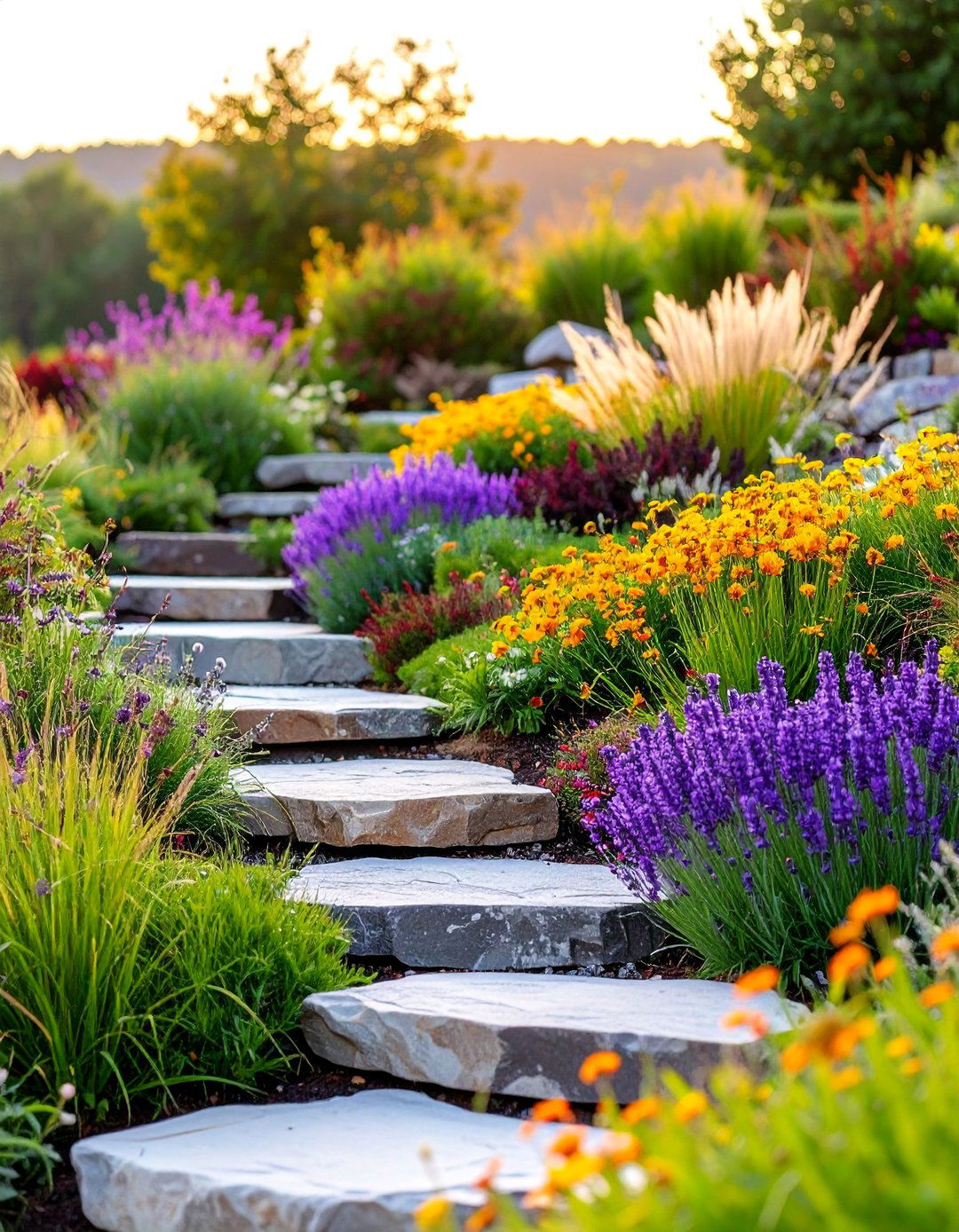






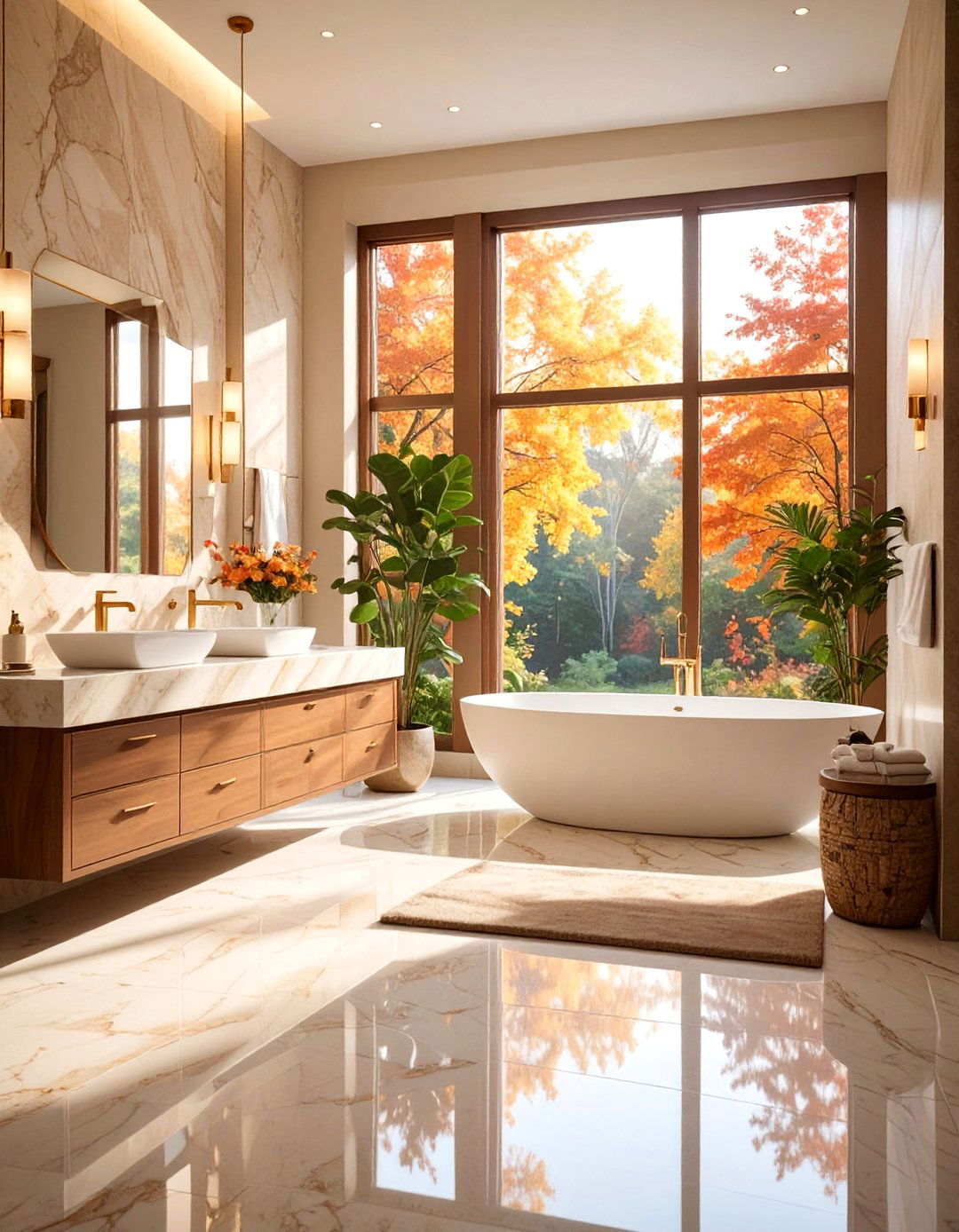
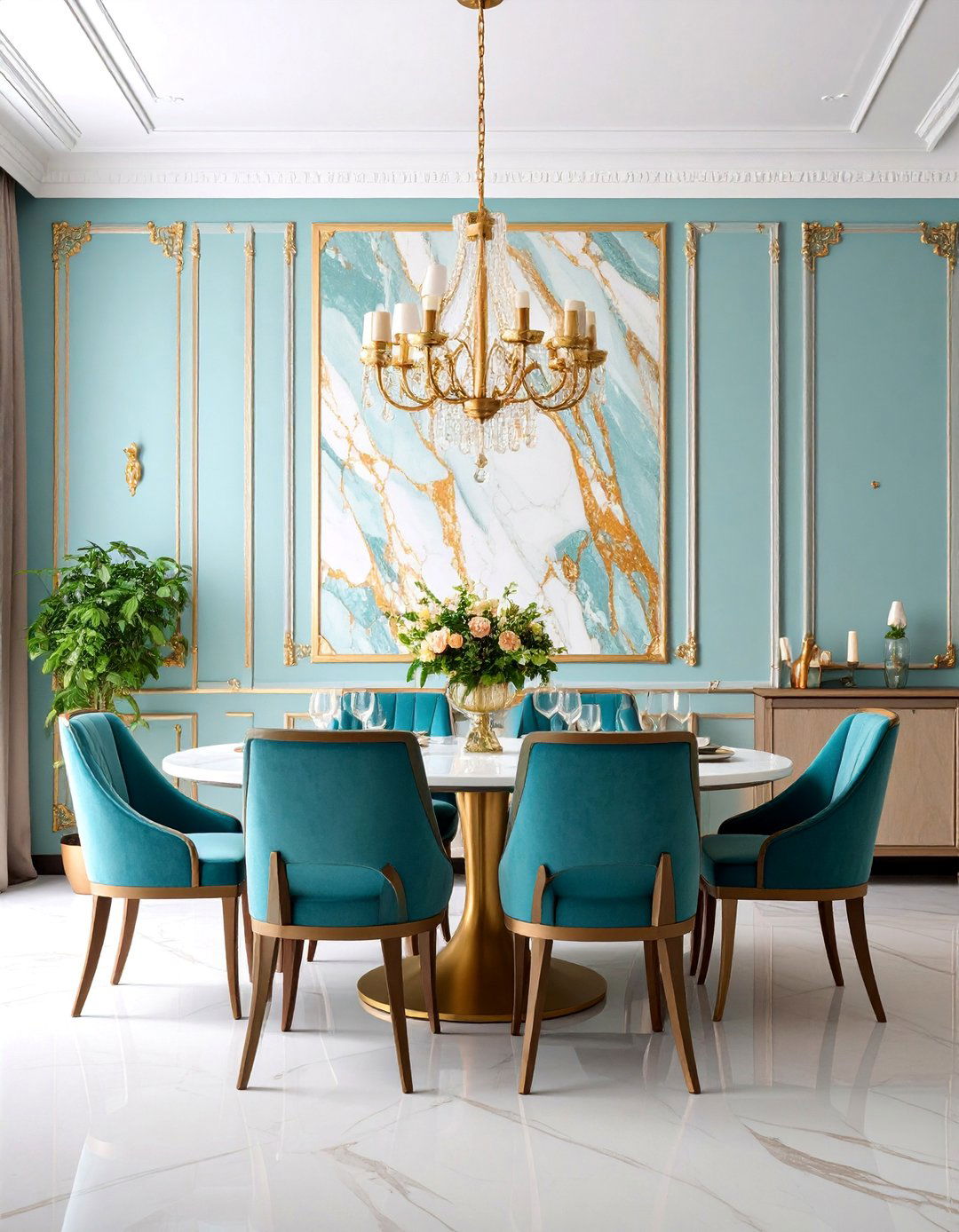

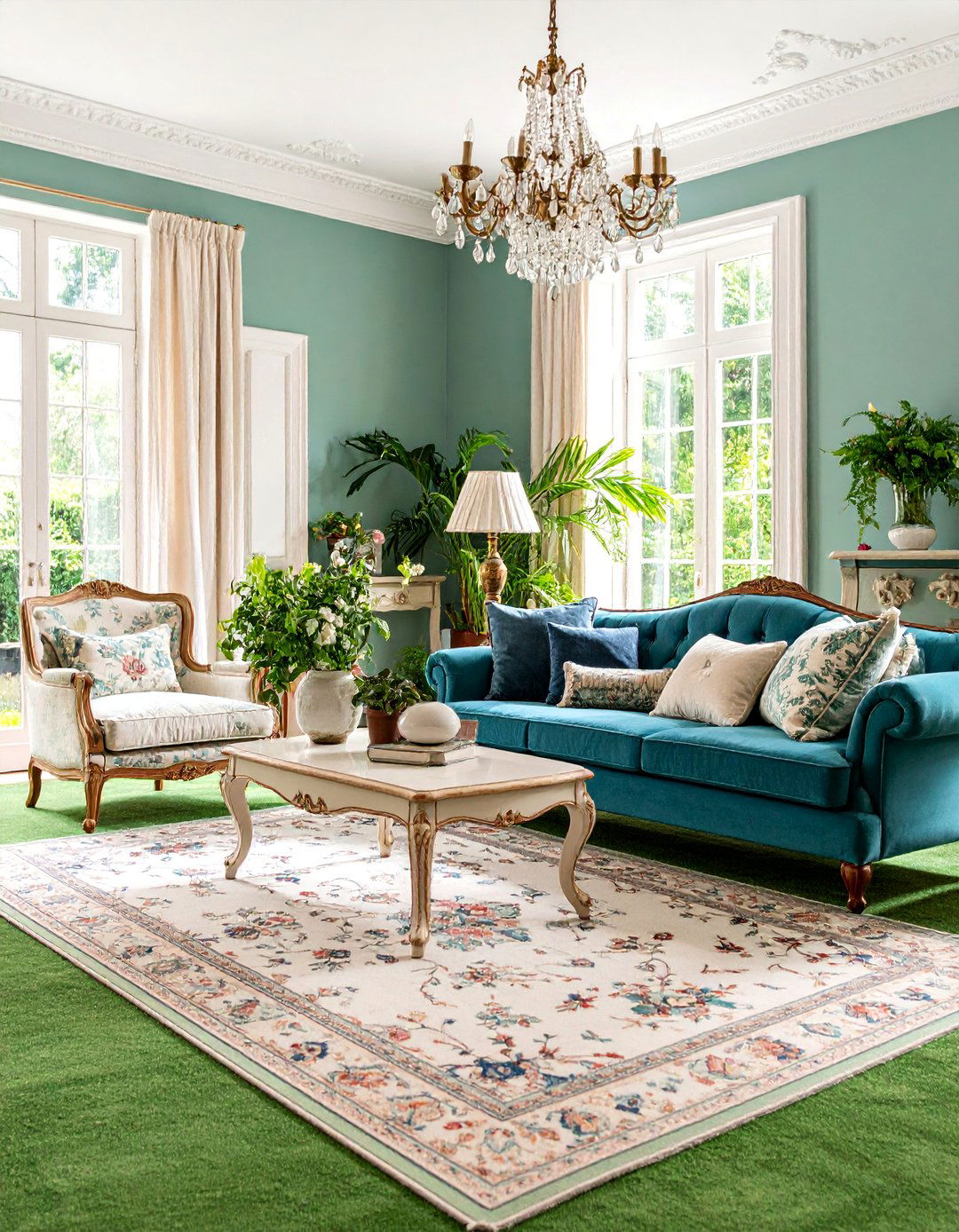

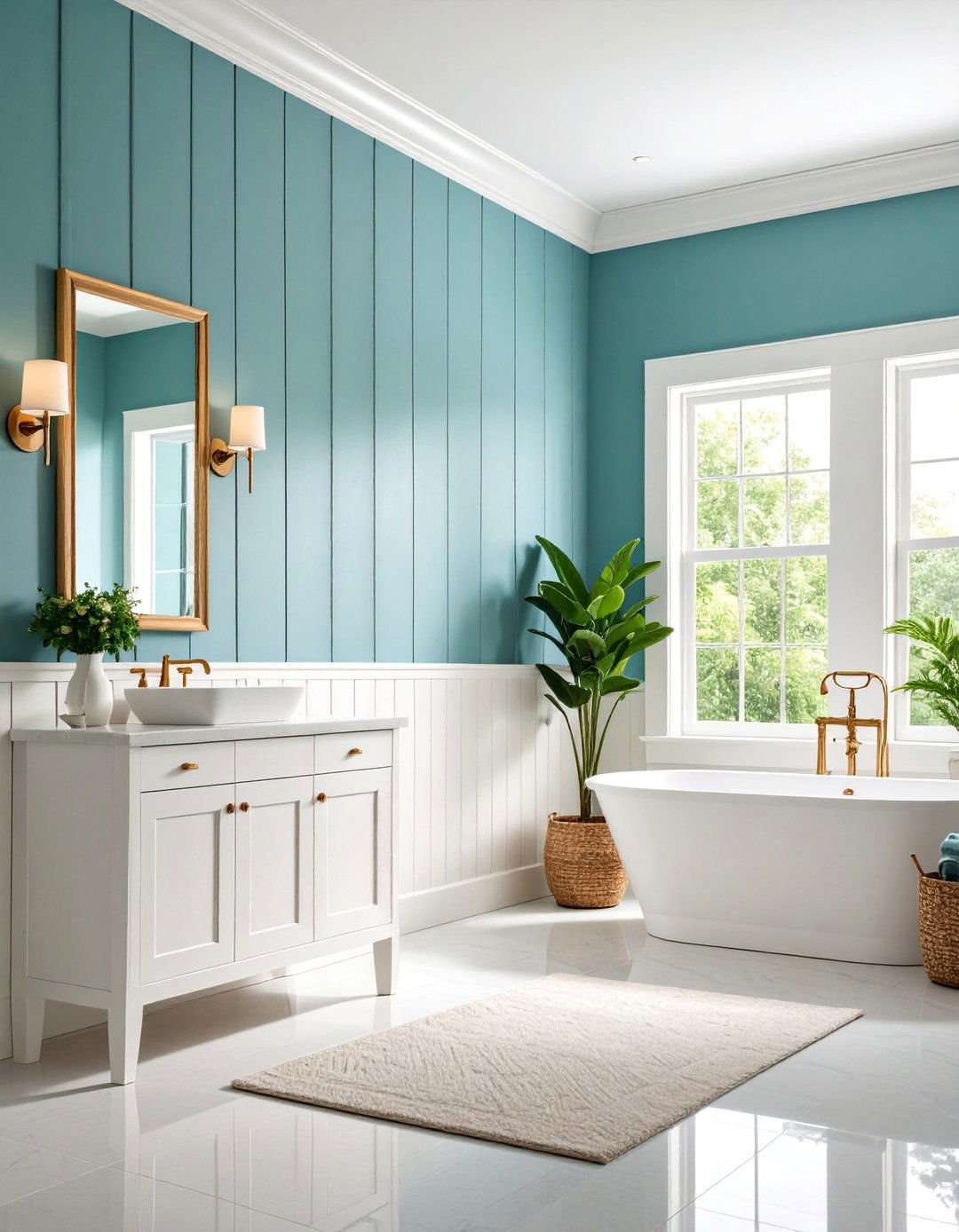
Leave a Reply